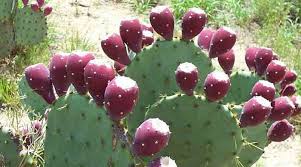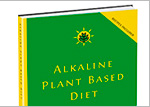Nopal Prickly Pear Cactus Benefits

Nopal Prickly Pear Cactus
The nopal prickly pear cactus belongs to the Opuntia genus of cacti. People refer to this cactus as nopal cactus or prickly pear cactus.
The individual green parts of the cactus are called nopal paddles or nopales. The cactus produces a red fruit called a prickly pear.
People in the Caribbean often call the prickly pear tuna, and also call the entire cactus tuna.
The nopal cactus, like all cactus species, is native to the Americas. They grow commonly in Mexico, the Caribbean islands, and dry areas of the Western United States.
They also grow along the East Coast of the United States. Producers now grow prickly pear in Africa, Australia, the Mediterranean, and Europe.
The nopal paddles can have spines, or can be spineless. The prickly pears have spines and small, hairlike prickles called glochids.
It is important to thoroughly remove the spines and hairs of the nopales and prickly pear fruit before consuming them.
Learn more about alkaline foods on the Dr. Sebi Nutritional Guide »
Both the nopales and the prickly pear are nutrient-rich and have benefits that support health and vitality.
People use the nopal paddles in stews, salads, marmalades, and add them raw in blended vegetable juices.
People also make prickly pear juice from the prickly pear fruit.
Nopal Prickly Pear Cactus Nutrition
The nutrition list is for 100 grams of the prickly pear fruit and 100 grams of the raw nopal paddle.
1 prickly pear fruit is around 100 grams. The values are based USDA database and Self Nutrition Data.
| Nutrient | Value | DV |
|---|---|---|
| Energy | 41 Kcal | 2% |
| Carbohydrates | 10g | 3% |
| Protein | o.7 g | 1% |
| Total Fat | 1 g | 1% |
| Cholesterol | 0 mg | 0% |
| Fiber | 4 g | 14% |
| Minerals | ||
| Calcium | 56 mg | 6% |
| Copper | 0.1 mg | 4% |
| Iron | 0.3 mg | 3% |
| Magnesium | 85 mg | 21% |
| Manganese | ~ | ~ |
| Phosphorus | 24 mg | 2% |
| Potassium | 220 mg | 6% |
| Selenium | 0.6 mcg | 1% |
| Sodium | 5 mg | 0% |
| Zinc | 0.1 mg | 1% |
| Vitamins | ||
| Vitamin A | 43 IU | 1% |
| Vitamin B6 | ||
| Vitamin B12 | 0 mcg | 0% |
| Vitamin C | 14 mg | 23% |
| Vitamin D | ~ | ~ |
| Vitamin E | ~ | ~ |
| Vitamin K | ~ | ~ |
| Folate | 6 mcg | 1% |
| Niacin | 0.5 mg | 2% |
| Pantothenic acid | ~ | ~ |
| Riboflavin | 0.1 mg | 4% |
| Thiamin | 0 mg | 1% |
| Nutrient | Value | DV |
|---|---|---|
| Energy | 16 Kcal | 1% |
| Carbohydrates | 3 g | 1% |
| Protein | 1.3 g | 3% |
| Total Fat | 0 g | 0% |
| Cholesterol | 0 mg | 0% |
| Fiber | 2 mg | 9% |
| Minerals | ||
| Calcium | 164 mg | 16% |
| Copper | 0.1 mg | 3% |
| Iron | 0.6 mg | 3% |
| Magnesium | 52 mg | 13% |
| Manganese | 0.5 mg | 23% |
| Phosphorus | 16 mg | 2% |
| Potassium | 257 mg | 7% |
| Selenium | 0.7 mcg | 1% |
| Sodium | 21 mg | 1% |
| Zinc | 0.3 mg | 2% |
| Vitamins | ||
| Vitamin A | 457 IU | 9% |
| Vitamin B6 | ||
| Vitamin B12 | 0 mg | 0% |
| Vitamin C | 9 mg | 15% |
| Vitamin D~ | ~ | ~ |
| Vitamin E | ~ | ~ |
| Vitamin K | 5.3 mcg | 7% |
| Folate | 3 mcg | 1% |
| Niacin | 0.4 mg | 2% |
| Pantothenic acid | 0.2 mg | 2% |
| Riboflavin | 0 mg | 2% |
| Thiamin | 0 mg | 1% |
Prickly Pear Benefits
100 grams of the prickly pear fruit is high in:
- Magnesium (21% DV)
- Vitamin C (23% DV)
- Fiber (14% DV)
100 grams of the nopal paddle is high in:
- Manganese, 23% DV
- Calcium, 16% DV
- Vitamin C, 15% DV
- Magnesium, 13% DV)
Fiber
Fiber helps to reduce the risk of hiatal hernia and acid reflex, reduces gut inflammation, and reduces the risk of stroke.
Magnesium
The body uses magnesium in the operation of over three hundred different enzymes that regulate numerous functions in the body.
It also uses magnesium to make DNA and RNA, and to support muscle and nerve function.
Learn more about foods high in magnesium.
Vitamin C
Vitamin C is an naturally occurring organic compound and antioxidant found in plants. An organic compound contains carbon and vitamin C’s chemical structure is C6H8O6.
Antioxidants protect against free radical damage which attack and age cells. Vitamin C in plants protects against cardiovascular disease and supports the immune system.
Prickly Pear Juice
It is pretty to easy to benefit from the prickly pear fruit’s magnesium by making prickly pear juice. Thoroughly clean the hairs off 2 prickly pear fruit, and cut off both ends.
Cut each prickly pear in 4 to make them easier to blend. Add the 8 pieces to a blender jar and fill the jar to 32 oz. with spring water.
Blend it for 30 seconds on a high setting and that is it. The seeds settle to the bottom, so pour of he juice carefully so you can remove the seeds.
The prickly pear fruit has its own sweetness and I drink it without adding a sweetener. If you prefer, you can add some date sugar to make it sweeter.







